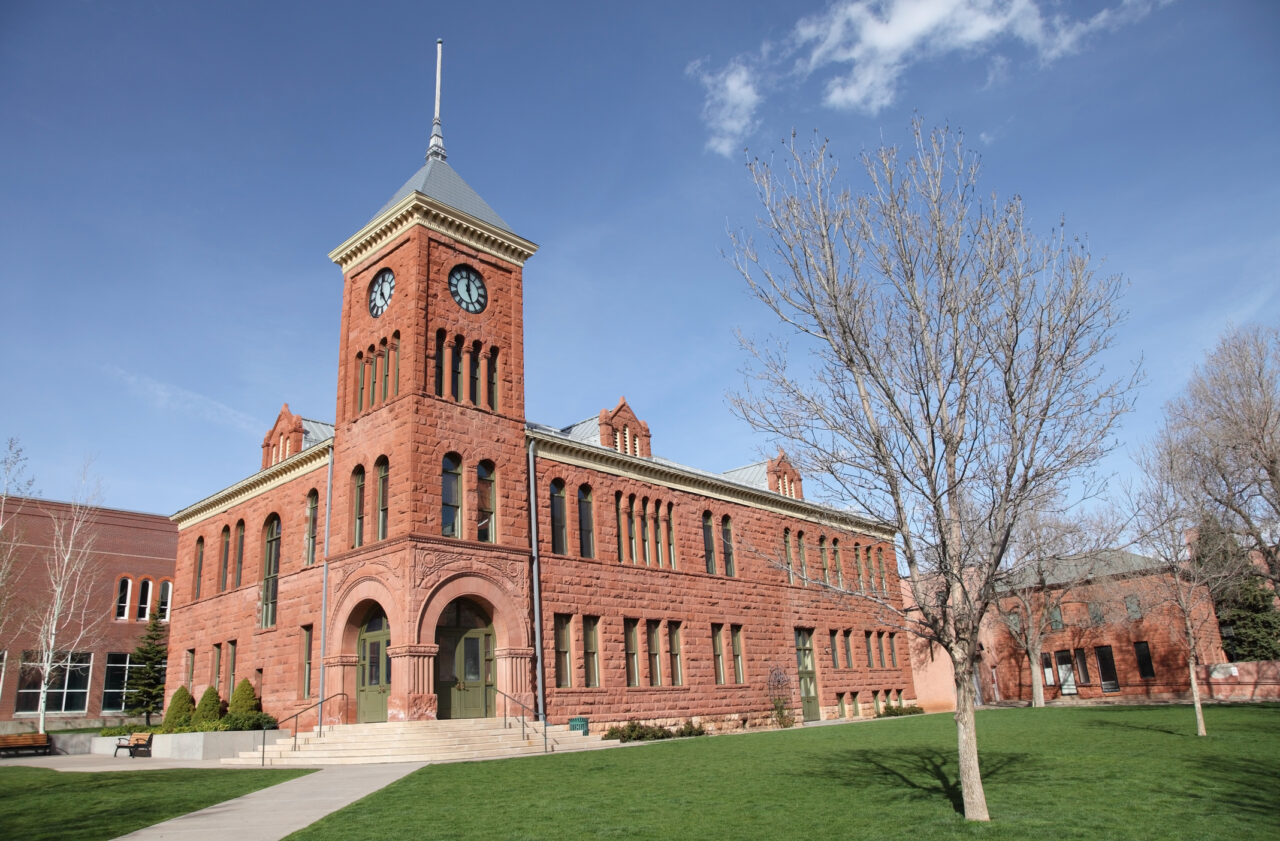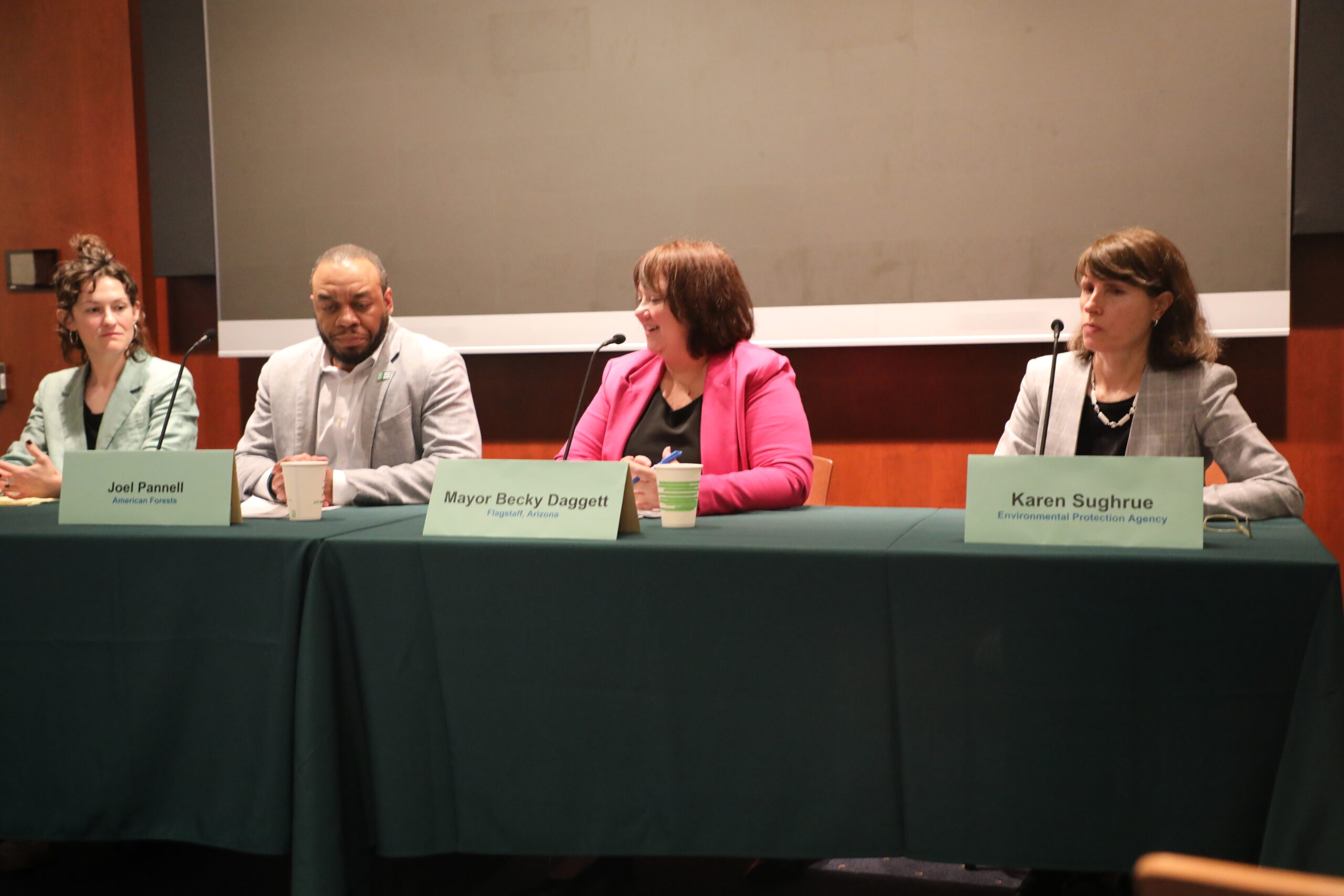By Mayor Becky Daggett, Flagstaff, Arizona
“I get so excited about the gardening club; I could just scream!” says a student at the Killip Elementary School.
When I hear this kind of enthusiasm from young students, I know we’re making a connection. And for me, it’s even more heartening that we’re talking about a gardening club in an elementary school. This speaks to the future impact of effective, city-led, nature-based solutions like we have implemented in Flagstaff.
Confronting the climate crisis is certainly no easy task, but standing at the frontlines is a different ball game altogether. This is precisely where cities find themselves: facing unique challenges with increasing urgency—whether it’s densely developed neighborhoods, areas where youth lack access to nature, or large numbers of vulnerable populations. Coupled with exacerbated rainfalls, the threat of wildfires, and extreme temperatures, it’s clear why local governments must lead the charge for nature-based solutions. Integrating natural environments and living systems into community planning goes beyond simply engaging our youth: it is crucial in forging a sustainable future. By adopting these strategies in Flagstaff, we not only address our immediate challenges but also lay the groundwork for long-term environmental resilience.
I had the honor of sharing Flagstaff’s resilience stories at a recent Congressional briefing hosted by the Environmental and Energy Study Institute, which concentrated on nature-based solutions for medium- and small-sized cities.
Our panel engaged in discussions on practical case studies of cities using funding from the Bipartisan Infrastructure Law to implement nature-based solutions, efforts to increase tree equity in urban areas, and the strategic utilization of the Clean Water State Revolving Fund. These conversations certainly served to enlighten, but more importantly, they centered on a crucial aspect: the critical role of federal support in expanding these initiatives and aligning them with broader federal policies and programs.

As I shared on the panel, Flagstaff’s Killip Elementary School found itself at a critical juncture due to severe flooding in 2021, uniquely positioning it as a focal point for both vulnerability and resilience, thus catalyzing the Flagstaff Green Schoolyards Initiative – a broader, district-wide green schoolyard plan and collaborative venture between the City of Flagstaff and Flagstaff Unified School District (FUSD). Flagstaff was selected as a cohort city for the Cities Connecting Children to Nature (CCCN) Green Schoolyards Initiative, a partnership between the Children and Nature Network and the National League of Cities, supported by The JPB Foundation, which aims to increase equitable access to nature for all children and foster systems-wide change by harnessing city and district leadership alongside interagency collaborations.
Despite the displacement of students that school year, we forged ahead with plans for infrastructure—not only stronger but greener. The Green Schoolyards Flagstaff coalition, formed after receiving two years of technical assistance from the Children & Nature Network, spearheaded the transformation of Killip Elementary School.

Comprising of representatives from the city’s Sustainability Office, the FUSD, local nonprofits such as Terra BIRDS, the University of Arizona Extension program, and local community leaders, this coalition aided in turning Killip’s schoolyard into a stormwater detention basin for the management of millions of gallons of stormwater. On top of that, we’ve established a Youth Therapeutic Horticulture Wellness Program, Pollinator Garden, and composting systems for school food scraps. These projects help students learn to care for the environment and each other in settings beyond the traditional classroom.
Although the Green Schoolyards program started before the adoption of our Carbon Neutrality Plan (CNP), it aligns well with the CNP’s emphasis on sustainable food systems and green spaces. We’re working diligently to integrate these projects more fully into future updates of the CNP.
Green schoolyards provide substantial benefits, including economic value. A recent analysis indicates that for every dollar invested in green schoolyard conversions, communities can see returns of 60 cents directly from environmental sustainability and local property tax revenue increases.
Source: How Green Schoolyards Create Economic Value (PDF)
Even modest improvements in high school graduation rates or community health could yield a positive return on investment, with gains potentially exceeding $3 for every dollar spent.
However, the social value of our work extends beyond its metrics: it’s empowering. Our Horticulture Wellness Program has improved the mood of 97% of its participants, and nearly 500 students, alongside 120 teachers, have been actively involved in land stewardship and ecological literacy programs.
Currently, we’ve wrapped up our third year, and while we’re eager to expand, our projects are currently restricted to Killip, which continues to thrive due to ongoing commitment and recently awarded grants. While the current city budget does not support an expansion of the Green Schoolyards program, the Killip Elementary Garden Committee is actively seeking ways to extend our green space initiatives to other schools, albeit in a more limited capacity for the time being.
Local nonprofits, particularly Terra BIRDS, have been instrumental in sustaining the vitality of our green schoolyard projects. The success of our projects relies heavily on our partners and collaborators, without whom progress would stall.
– Mayor Becky Daggett, Flagstaff, Arizona
Flagstaff is fortunate to have received a grant from Partners for Places, a joint initiative by The Funders Network and the Urban Sustainability Directors Network, which will support the creation of an interactive map of schoolyard green spaces to identify access gaps, particularly spotlighting Indigenous connections to the local landscape. Additionally, we’ve received $1 million to create three “resilience hubs” under the U.S. Environmental Protection Agency’s Environmental Justice Government-to-Government, which serves to support historically underinvested communities in emergency preparedness. Federal initiatives like these underscore the critical role of government support in enabling climate-resilient projects.
Despite these advances, funding remains a significant barrier at both the local and federal levels, where the length of time to distribute funds and discrepancies between federal and local policies can impede progress. Our limited staff capacity also impacts our ability to meet our long-term aspirations. To sustain initiatives like the Green School Yards and replicate their success in other cities and school districts, we need federal grants that trickle down to municipalities—these are essential to keeping the heartbeat of our projects beating.
Browse Federal Funding Sources
To assist other municipalities and nonprofits in finding the funding they need for similar endeavors, the CCCN’s list of federal funding sources provides an essential tool for local leaders navigating nature-based solutions. This resource is highly recommended for anyone looking to explore federal funding opportunities that can support similar initiatives.








